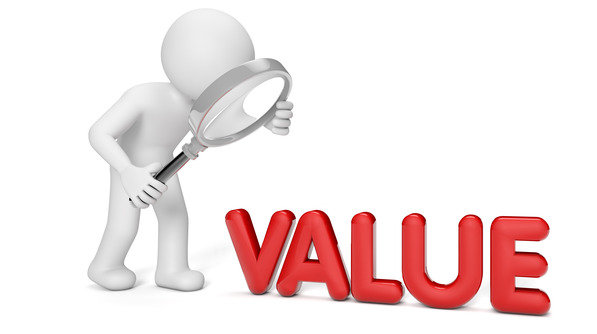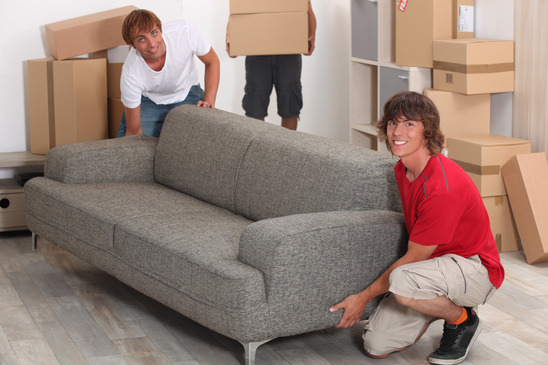Pianos aren’t your typical furniture. You can’t shuffle a piano from one place to another by yourself. And in fact, even trying to move it with the help of a friend can be difficult at best.
Overall, pianos weigh anywhere from 300 to over 1,000 pounds, depending on the style and type. Which means in order to make sure the piano arrives safely to its final destination, and you arrive uninjured from lifting a heavy, bulky item, special precautions are needed.
In almost all circumstances, a piano mover will use a special skid called a piano board to help move the piano. The piano will be wrapped in blankets and attached to the piano board.
If the piano is being moved a short distance, the piano board will be put onto a dolly and rolled to its final destination. If a stairway needs to be used, the dolly is removed and the piano is slid very slowly in a controlled manner up or down the stairs.
While an upright piano will remain standing, a grand piano is moved on its side. First the lid and the pedal lyre are removed. Then the leg at the straight side of the piano is removed and the piano is carefully lowered onto the piano board. After the two remaining legs are removed, the piano is covered with blankets and strapped to the board. In this position, it gives the movers the ability to control the piano through door openings and stairwells, without the risk of damaging the protruding legs.
Most movers will consent to moving a piano up or down one flight of stairs, when no other alternative is possible. When other options are available, movers will consider them first. To get a piano to the second floor, many movers prefer to hoist or rig it and bring it in with a crane rather than moving it up or down the stairs.
Corners are the most difficult to judge because they can’t be easily measured. When you choose a professional piano mover with lots of experience, they are better at judging what’s possible and what’s not. If a piano cannot be moved safely to its intended location, a mover will stop the move, bring the piano back to its original location until an alternative process can be devised.
Piano moving is the responsibility of the customer. If you have a move coming up, don’t wait until the last moment. By hiring a piano mover first, they can visit your location ahead of time, judge the move, and offer recommendations on how to safely get your piano from one destination to the other, safely and security.





 around 600 pounds and can go up to 1300 pounds and beyond. The value of a piano can range from several hundred dollars all the way up to a million or more, depending on make, model, age and condition. Add in the bulk, shape and size a piano has, and its easy to see why a piano has very unique situations when it comes to moving. Household movers understand how to move furniture and appliances in and out of your house. But adding in the unique nuances a piano gives adds a whole new dimension to the common every day move. If you trust anyone outside of a professional piano mover, you have to ask yourself first “Am I willing to take a risk?” Not only is it risky to the mover – injuries can be substantial – its also risky for the piano, especially if its antique or has sentimental value.
around 600 pounds and can go up to 1300 pounds and beyond. The value of a piano can range from several hundred dollars all the way up to a million or more, depending on make, model, age and condition. Add in the bulk, shape and size a piano has, and its easy to see why a piano has very unique situations when it comes to moving. Household movers understand how to move furniture and appliances in and out of your house. But adding in the unique nuances a piano gives adds a whole new dimension to the common every day move. If you trust anyone outside of a professional piano mover, you have to ask yourself first “Am I willing to take a risk?” Not only is it risky to the mover – injuries can be substantial – its also risky for the piano, especially if its antique or has sentimental value.
 average vertical piano can weigh anywhere from 400 to 900 pounds. A grand piano can start at 650 pounds and go to 1300 pounds and more, depending on the size. Pianos also vary in value, depending on the make, model, age and condition of the piano. A regular mover is all about speed. They work hard to move all of your furniture in a timely manner. Therefore a coach or entertainment center would be treated the same as your piano. Yet pianos are completely different objects and need care to make sure they or the person moving them aren’t injured. There is a right and wrong way to move a piano.
average vertical piano can weigh anywhere from 400 to 900 pounds. A grand piano can start at 650 pounds and go to 1300 pounds and more, depending on the size. Pianos also vary in value, depending on the make, model, age and condition of the piano. A regular mover is all about speed. They work hard to move all of your furniture in a timely manner. Therefore a coach or entertainment center would be treated the same as your piano. Yet pianos are completely different objects and need care to make sure they or the person moving them aren’t injured. There is a right and wrong way to move a piano.
